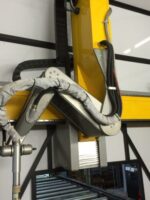Meet Model X from Tesla
Model X is said to be the safest, fastest and most capable sport utility vehicle in history. Standard with all-wheel drive and a 90 kWh battery providing 250 miles of range, Model X has ample seating for seven adults and all of their gear. And it’s ludicrously fast, accelerating from zero to 60 miles per hour in 3.2 seconds. Model X is the SUV uncompromised. The estimated delivery for new reservations is the latter half of 2016. Safety First Design Every part of Model X is designed with safety as a first priority. The floor-mounted battery lowers the centre of gravity so that the risk of rollover is almost non-existent. The battery structure strengthens Model X against side impact intrusions. And without a gasoline engine, the large front trunk acts as a giant impact-absorbing crumple zone. Active Safety Model X continually scans the surrounding roadway with camera, radar and sonar systems, providing the driver with real-time feedback to avoid collisions. Even at highway speeds, Model X will automatically apply brakes in an emergency. Pollution Free, Inside and Out A medical grade HEPA filter strips outside air of pollen, bacteria, viruses and pollution before circulating it into the cabin. There are three modes: circulate with outside air, re-circulate inside air and a bioweapon defence mode that creates positive pressure inside the cabin to protect occupants. Falcon Wings Falcon Wing doors allow easy access to second and third row seats from any parking space. Minivan style sliding doors open at most halfway while traditional doors are not capable of opening fully when parked next to another car. With only a foot of clearance, Falcon Wing doors articulate smoothly up and out of the way, allowing passengers to enter from both front and rear directions. The side and overhead opening is so large […]










